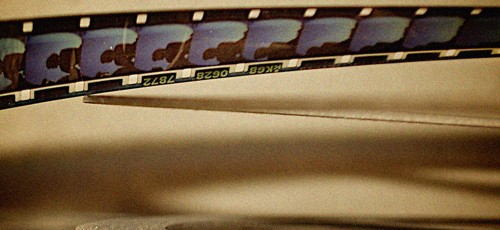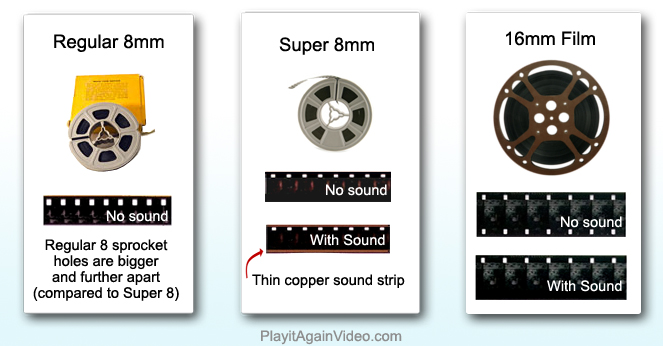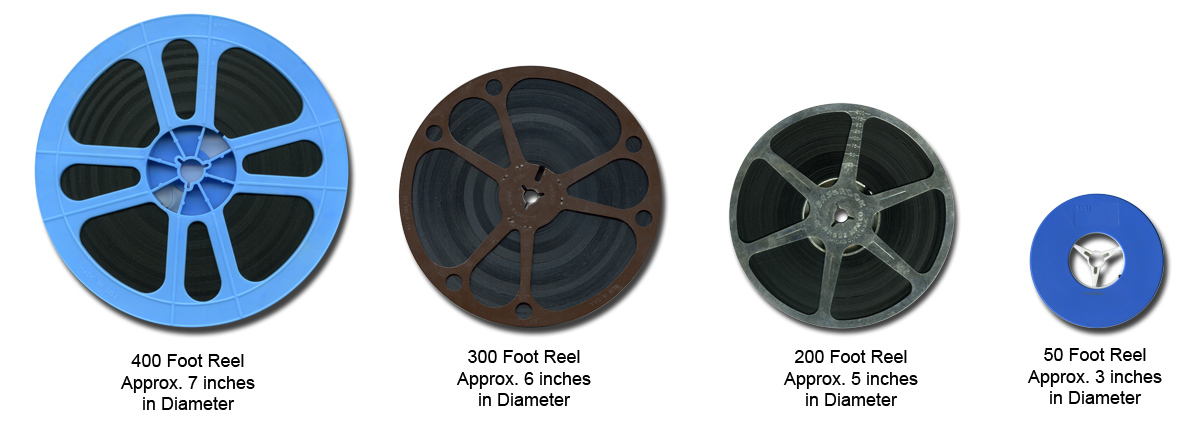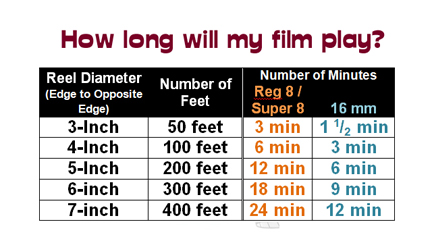A Guide to Preserving and Transferring Home Movies
Many of us have home movies tucked away in our garage or a space in the closet. It has probably been a long time since you’ve watched them, back when there was a working projector in the house, or maybe you’re so young that you never watched them at all. Either way, if you’ve been meaning to finally take them out, now is the time to dust off those old reels and get them digitized before those memories are lost forever. That’s right, they won’t last forever. In fact they’ve been slowly deteriorating and will continue to do so. Here is a quick reference guide on how to identify your reels, properly store them, and digitize them.
Basic Film Info:
Type of film:
Length of film:
The information below has been adapted from the Transfer section of the Home Movie Day website. If your film reels are eligible for digitization through Memories to Light, the transfer is free of charge and you will receive a DVD copy of your films as well as the digital files uploaded to a hard drive provided by the donor.
Access and Preservation:
The two primary reasons for transferring films is to have them easily viewable (access), as on a DVD, or to want them to be viewable in the next 20 to 50 years (preservation).
The simplest strategy for long-term preservation is to care for the original film. However, the wear and tear of projecting it in its original format will contribute to its deterioration. In this sense, making access copies on a DVD will allow you to share the footage with your family and friends and without damaging the original footage.
Film, like other mediums, will succumb to decay, where it will no longer be transferrable or projectable. The most common signs of this are a vinegar odor and warping. If the goal for you is to extend the life of your footage beyond the original film, you need to create copies that capture as much of the original image and have the best chance of surviving into the future. These are called preservation copies. However, as we know, technology moves fast, it is difficult to gage the durability and endurance of DVD, tape, disk, and hard-drive copies. The best we can do is determining the most promising technology now, until the next new and improved method and technology comes along.
Previewing films:
Before getting your films transferred it is a good idea to have a plan for your footage. Rather than paying to have your entire reel transferred, which can be costly, it is a good idea to preview and select the footage you would like to be transferred.
If you have a film projector it may not be too difficult to get it working, especially if you have a user’s manual. However, this method can easily damage the film, especially if the projector is dirty or misaligned. Small hand crank viewers are more gentle on the film.
Another method is to find a film archive or university film department that can help you out. If they do not have the right equipment, they will definitely be available for referrals to other institutions or organization that could help.
If there is a Home Movie Day in your area, contact the organizers to see whether the projectionist or someone trained in projection might be available to assist with previewing your material.
Services:
Although the quality, technology used, and price of transferring your footage differs from place to place, there are 3 broad distinctions between the transfer services.
Basic service:
As the title suggests, this is the most elementary service that would be provided. Generally, the film is projected on a reflective surface and re-photographed by a digital camera. Any well-trained operator can avoid the flickering that sometimes results from this. Sound films will most likely not be effective. This process is perfectly acceptable for Access purposes.
Advanced Service:
This is a somewhat more specialized version of the Basic Service. A camera or CCD (charge-coupler device) points directly into the projection light, rather than the surface, and re-photographs directly off the surface of the film. Each frame is captured individually. The imaged are then converted to the specified format, using a video card or computer and printed on the desired medium. Some systems might not be able to record and optical or magnetic soundtrack directly off of the film.
Full Service:
These are most likely provided by professional film labs, who posses a wide range of technologies. Some services they provide are re-shooting film onto fresh film stock, blowing up smaller format films to larger, options for optimizing image control using a wet gate device designed to eliminate scratches. These labs also provide services to repair badly warped and damaged film stock and handle obscure and obsolete formats such as 9.5mm and 28mm film. Labs such as these will also be able to capture and optimizing soundtracks.
Written by Ashlyn Perri, CAAM Digital Media Associate




1 Comment